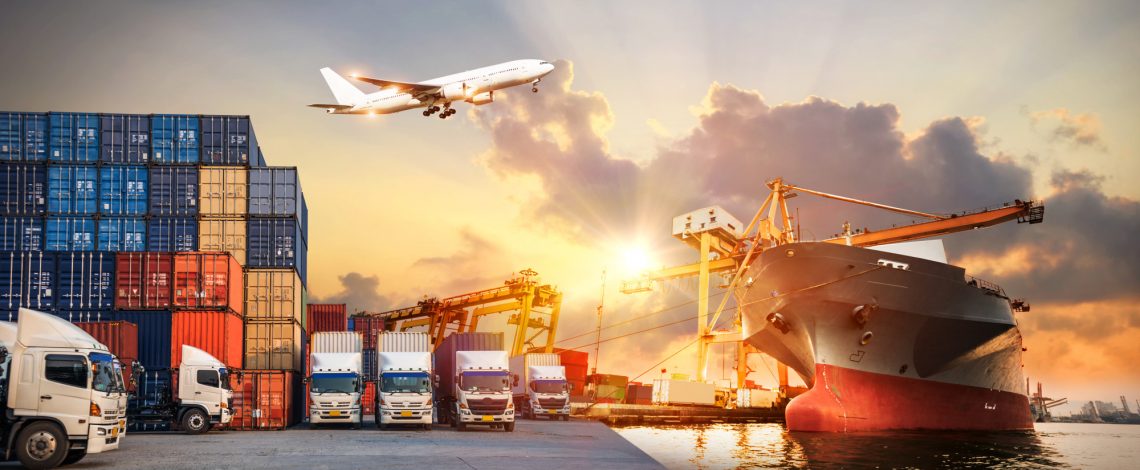There are over 50,000 merchant ships moving freight on the ocean at any given time. These ships move container shipments between 150 nations across the world.
What happens to these large containers once they hit the shores of their final destination country? That is one example of freight deconsolidation.
Keep reading to what deconsolidation is and how it affects you.
What Is Freight Deconsolidation?
Deconsolidation of freight happens when one shipment gets broken up into smaller loads. This typically occurs when larger ocean freight containers arrive in port. Though it can happen at any point in the logistics and distribution channels.
What About Consolidation?
As the name implies, freight consolidation combines multiple shipments into one. By combining many smaller shipments into one larger one, you can save money on your freight shipping services.
Shipping can negotiate lower rates by having larger and heavier shipments. This works because the volume of the two shipments changes when you combine them into one.
It is also more secure to have one shipment rather than a ton of smaller ones.
Why Is Deconsolidation Crucial?
Freight deconsolidation plays a crucial role in e-commerce businesses during peak demand times. You will be able to improve your inventory availability and fulfill more orders.
Freight forwarders will regularly use consolidation to reduce their operating costs. This translates to being able to offer more competitive pricing to their customers.
Inventory Management
When you get the consolidation process right for your business, you can enjoy better inventory management. You will move your inventory in bulk closer to the source of demand, your customers.
A good example of this process at work would be stores that allow you to order online and pick up in the store. Customers enjoy it because they get free shipping.
Stores like this option because they can utilize their already in place supply chain. All the company has to do is put the customer’s order on the truck sent to make a delivery of inventory to a retail store.
Once the shipment arrives at the store it is deconsolidated. Store inventory goes to the store shelves; customer orders get distributed to the individuals.
Customers can get their order in a day or two. You can’t get that kind speed at the same cost when shipping directly to the customer’s door.
It’s Not as Simple as It Sounds
It sounds so simple, right? Combine shipments and break them apart. Except it isn’t that easy.
To successfully reap the benefits of consolidating and deconsolidating, you need to manage your freight process carefully. If done incorrectly you can increase your costs and risk.
Select the Right Carrier
This is going to be a hurdle that you face when setting up your processes. A third party freight broker will not be able to track and manage these types of complicated shipments.
Your best option is to find a freight forwarder who has the experience to manage and track your shipments properly.
Intermodal Challenges
Some companies may find that they need different methods of transport and multiple distribution locations. Your shipments may get consolidated, broken down, and then reconsolidated into new shipments.
These sort of multiple movements requires a sophisticated tracking system. Otherwise, it is a very real possibility that you will lose your some of your shipments.
Look for a tracking system that uses AIDC and RFID. These two technologies automate your tracking and ensure accuracy by removing the bulk of human error.
When you have a tracking system in place, you can utilize truck, ocean, rail, and air freight. You can also use full truckload and LTL
Increased Touch Points
We all know that the more times a freight gets touched, the higher the risk for something to go wrong. To ensure that your consolidation plan is cost-effective, you need to limit the number of touchpoints.
A greater number of touchpoints can also mean higher costs. To keep costs down monitor your documentation methods and automate as much as possible.
Routing Problems
When you have a sophisticated consolidation plan, you will find that shipment routing is both a science and an art. The challenge will be to address potential problems before they arise.
Consider this; you consolidate your shipment headed to the northeast in winter. It gets delayed on its way to the distribution center by a winter storm.
The storm only directly affects one or two states. Unfortunately, you consolidated your shipments, so now all shipments to all of the northeastern states are delayed. This will cause an increase in unsatisfied customers.
Unloading Delays
It requires time and space to deconsolidate a large shipment such as a full truckload. Both of these commodities are a premium for carriers. This can lead to them delaying your deconsolidation in favor of more favorable shipments.
To avoid this, you’ll want to plan well in advance. Make sure that the facilities you plan to do these activities are equipped for it.
Plan to work with multiple warehouses to diversify your risk within your supply chain.
Schedule Your Consolidation and Freight Today
If you need to reduce your freight shipping spend, then consolidation and deconsolidation of your shipments may be the solution you need. By combining your shipments, you can reduce both your individual shipment cost and lost shipments.
Not every freight carrier or shipper is capable of handling this type of shipping. Look for a carrier who has both the logistical experience and warehouse space to handle these types of shipments effectively.




